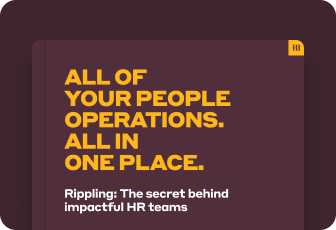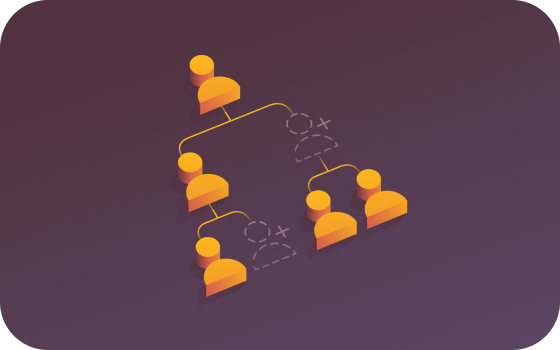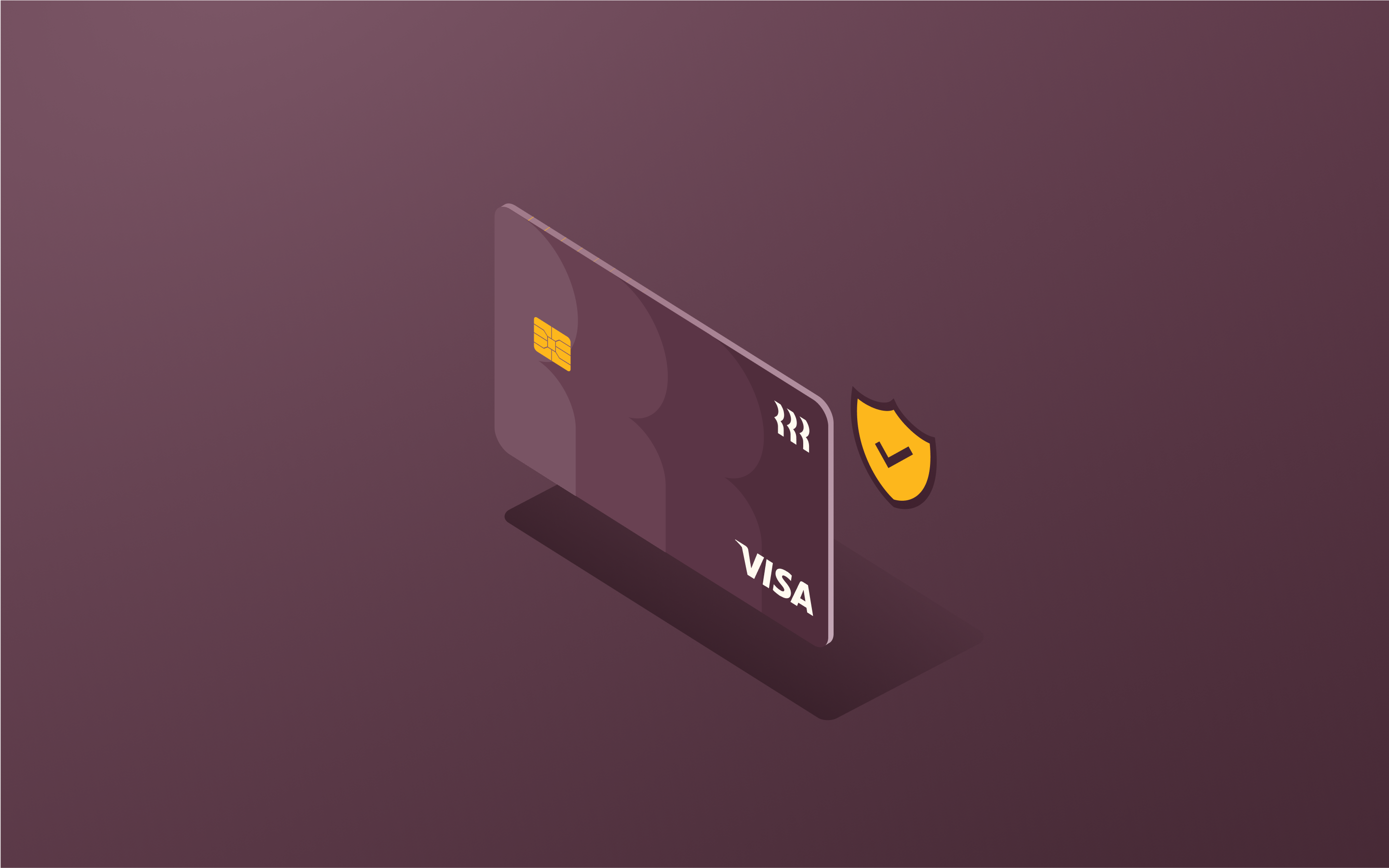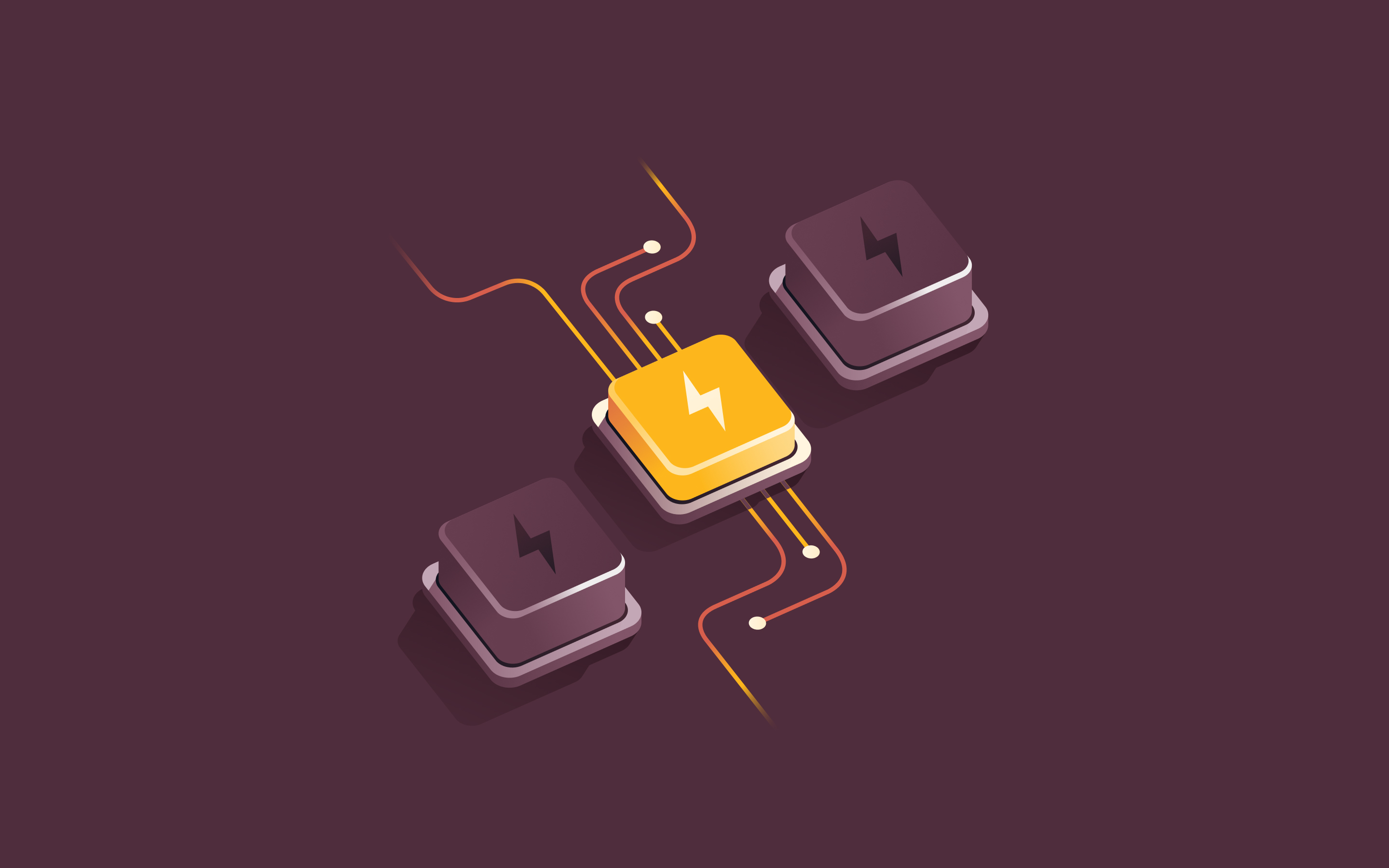Top 8 remote equipment management software in 2025

In this article
Managing employee devices when your team works from home offices across different cities or countries presents challenges that traditional IT departments never faced.
You need to get laptops to new hires before their start date, keep devices secure from cyberattacks, handle repairs and replacements, and retrieve everything when employees leave, all without physical access to any of it.
The logistics alone can overwhelm small IT teams. Finding boxes, coordinating shipments, tracking returns, storing unused devices, and managing the entire equipment lifecycle remotely requires tools built specifically for distributed workforces.
That’s where remote equipment management software comes in. These platforms simplify the operational side of distributed work, while also reinforcing security controls that protect company data.
In this guide, I’ll walk through the best remote equipment management tools for 2025. From ordering and shipping to monitoring and retrieval, these are the tools I’d recommend to help IT managers and teams equip and protect a modern workforce.
What is remote equipment management?
Remote equipment management is the set of systems and practices companies use to manage devices for employees working beyond a traditional office. It covers laptops, phones, monitors, and other work-from-home equipment employees rely on to stay productive.
It goes far beyond just tracking where equipment is. Strong remote equipment management covers the full device lifecycle, including:
Identifying what hardware employees need for their role
Purchasing and shipping devices
Setting up security configurations remotely
Monitoring device health and software updates
Providing IT support without physical access
Retrieving equipment when employees leave or need replacements
For teams without a central office, this becomes essential infrastructure. Without the right systems, companies risk slow onboarding when devices arrive late, security gaps from unmonitored hardware, confusion over what’s in inventory, and data exposure when departing employees keep company devices.
Thankfully, modern remote management software automates many of these processes, integrating device procurement, mobile device management (MDM), inventory tracking, and logistics coordination into unified platforms that IT teams can manage from anywhere.
Quick comparison: Best remote equipment management tools at a glance
Tool | Best for | Choose this if you... | Main features | Starting price |
|---|---|---|---|---|
Rippling | Companies wanting unified HR and device management | Want automated provisioning tied to employee lifecycle events and need integrated warehousing | Inventory management with secure warehousing, integrated MDM with SentinelOne security, device ordering and shipping from platform | $8 PEPM |
ManageEngine Endpoint Central | Organizations needing endpoint security | Need extensive patching capabilities across 1,100+ apps with good vulnerability management | Automated patching for Windows/Mac/Linux, vulnerability remediation, ransomware protection, remote troubleshooting | $795/year for 50 endpoints |
NinjaOne | Organizations with fluctuating device counts | Want predictable per-device pricing that decreases as you scale | Unified endpoint management (UEM), patch management, MDM, remote monitoring and management (RMM) | $1.50/month/endpoint for 10,000+ endpoints |
Asset Panda | Businesses focusing on equipment lifecycle tracking | Need customizable workflows for tracking diverse equipment | Equipment and inventory management, work order creation, barcode/QR code tracking | $50/user/month for 5 users and 1,000 assets |
Atera | IT departments and managed service providers (MSPs) wanting per-technician pricing | Manage hundreds of devices with a small IT team and want predictable costs | RMM software with unlimited endpoints, patch management, ticketing and helpdesk, AI Copilot for troubleshooting | $149/month per technician |
N-central RMM | MSPs managing complex networks at scale | Need robust reporting, automation and flexibility for diverse client environments | UEM, automated patching, comprehensive rules engine, built-in BI reporting, EDR/MDR integration | Contact for pricing |
Snipe-IT | Organizations wanting open-source asset tracking | Prefer self-hosted solutions with complete transparency and no vendor lock-in | Open-source asset management, REST API, license management, audit trails | Free (self-hosted); $399/year for basic hosting |
EZO | Teams needing visual asset tracking with mobile apps | Need mobile scanning for on-the-go asset management | Asset lifecycle management, reservations and availability calendar, purchase order tracking, | $40/month for 250 items |
Methodology: How we chose the best remote equipment management tools
I evaluated remote equipment management platforms based on how well they solve the actual problems IT teams face when managing distributed devices:
Remote-specific capabilities: Starting with features designed specifically for managing devices you can't physically access. This includes remote deployment, over-the-air configuration, remote monitoring and troubleshooting, automated security updates, and remote lock/wipe capabilities.
Logistics integration: Because device management also involves moving physical hardware, I looked at whether platforms help with procurement, shipping coordination, return logistics, and warehousing, or if those tasks remain manual.
Device lifecycle coverage: Complete solutions should cover every stage of the lifecycle, from procurement and setup through daily use to final retrieval. I paid attention to how consistently each platform supports all of these steps.
Security and compliance: Remote devices create a broader attack surface, so I examined security features like automated patching, endpoint protection, encryption enforcement, and audit trails to see how well platforms maintain compliance outside office walls.
Scalability and administration: I tested how administrative work scales as the workforce grows. The best platforms reduce routine maintenance tasks and keep visibility clear without requiring IT staff to increase in lockstep with device counts.
Integration with existing systems: Remote equipment management rarely works in isolation. I checked how well each platform integrates with HR systems, security tools, helpdesk software, and other systems IT teams already use.
Pricing transparency and structure: Finally, I considered pricing models make sense for distributed teams and whether costs are predictable as you scale. Some charge per device, others per user or technician, while some bundle equipment management into larger IT suites.
Top 8 remote equipment management tools
1. Rippling
Rippling takes a unique approach to remote equipment management by connecting device lifecycle management directly to your HR system. This integration means device management happens automatically as part of employee lifecycle events rather than requiring separate IT processes.
Why it stands out: The HR and device management integration eliminates coordination gaps that typically cause problems with remote equipment. When you hire someone through Rippling, the platform can automatically order their laptop and ship it to arrive before their start date. The device gets configured with the right applications and security settings based on their role, department, and location — all pulled from HR data.
This automation extends throughout employment. When someone gets promoted or changes departments, their device access and configurations update automatically. When they leave, Rippling automatically ships them a return box with prepaid label, tracks the return, wipes the device upon receipt, assesses its condition, and stores it in a secure warehouse for reassignment to the next hire.
Rippling’s inventory management software handles the physical logistics that most MDM software ignores. The platform operates secure warehouses where you can store new and returned devices. Instead of maintaining your own IT closet or storage space, you manage your entire inventory remotely through the dashboard. You can see which devices are in stock, their condition status, and quickly reassign them to new employees with automated shipping.
Rippling Inventory and Device Management have been huge for us. It is an absolute dream to be able to order systems and have them shipped and not ever have to think about customs and shipping and all that stuff.
Sean Edwards
Head of Security at Appcues
Where it falls short: Rippling’s inventory management is powerful but can feel complex when setting up device coding, tracking rules, and workflows. It may take some initial configuration to get everything aligned, though support resources are available to guide the process.
Is it right for you? Rippling excels for growing companies where equipment management is part of broader employee operations. It's particularly valuable if you're frustrated by coordinating device procurement, shipping, and retrieval separately from your HR processes. The automation it provides becomes more valuable as your distributed team scales rapidly.
Feature snapshot
Feature | Details |
|---|---|
Supported devices | Windows laptops, Mac laptops, iOS devices, iPadOS devices |
Remote deployment | Zero-touch enrollment, automated configuration based on HR role |
Security | SentinelOne integration, remote lock/wipe, encryption enforcement, behavioral detection |
Logistics | Device ordering, automated shipping, return box automation, secure warehousing |
Lifecycle management | Automated provisioning/deprovisioning tied to HR events, device reassignment |
Integrations | Native HR system, 650+ app integrations, SSO, directory sync |
Pricing | $8 PEPM |
2. ManageEngine Endpoint Central
ManageEngine Endpoint Central provides endpoint security and IT management across Windows, Mac, and Linux devices with deep capabilities for patching, vulnerability management, and threat protection.
Why it stands out: The platform's automated patch management covers over 1,100 third-party applications alongside OS patches. The "set-and-forget" automation handles scanning, detecting, testing, and deploying patches without manual intervention. You can test patches on a testbed before broad deployment to ensure stability.
Where it falls short: The platform focuses heavily on security and monitoring, but doesn't handle the physical logistics of shipping, warehousing, or retrieving devices like more operationally-focused tools do. Organizations needing help with device procurement and logistics should look elsewhere or supplement with additional tools.
Is it right for you? Endpoint Central works well for organizations prioritizing security and compliance across distributed devices. If you need vulnerability management, automated patching, or compliance reporting, the platform delivers strong capabilities.
Feature snapshot
Feature | Available for ManageEngine Endpoint Central? | Available for Rippling? |
|---|---|---|
Supported devices | Windows, macOS, Linux, ChromeOS, Android, iOS, iPadOS, tvOS | Windows laptops, Mac laptops, iOS devices, iPadOS devices |
Remote deployment | Operating systems (OS) imaging and deployment, zero-touch deployment | Zero-touch enrollment, automated configuration based on HR role |
Security | Vulnerability remediation, ransomware protection, endpoint management | SentinelOne integration, remote lock/wipe, encryption enforcement, behavioral detection |
Logistics | Not included | Device ordering, automated shipping, return box automation, secure warehousing |
Lifecycle management | Patch management, remote troubleshooting | Automated provisioning/deprovisioning tied to HR events, device reassignment |
Integrations | SIEM tools (Splunk, Microsoft Sentinel), directory services | Native HR system, 650+ app integrations, SSO, directory sync |
Starting price | $795/year for 50 endpoints | $8 PEPM |
3. NinjaOne
NinjaOne provides unified endpoint management with per-device pricing that makes it attractive for organizations managing varying numbers of remote devices or MSPs handling multiple client environments.
Why it stands out: The platform's per-device pricing model scales efficiently from $3.75/month per endpoint for small deployments (50 or fewer devices) down to $1.50/month for large deployments (10,000+ endpoints). This flexibility works well for growing companies or MSPs whose device counts fluctuate.
Where it falls short: NinjaOne is designed with MSPs and sysadmins in mind. For internal IT teams that want automation tied to the employee lifecycle, it may feel reactive and admin-heavy.
Is it right for you? NinjaOne suits IT teams and MSPs that need remote monitoring and management with flexible pricing.
Feature snapshot
Feature | Available for NinjaOne? | Available for Rippling? |
|---|---|---|
Supported devices | Windows, macOS, Linux, iOS, Android, VMs | Windows laptops, Mac laptops, iOS devices, iPadOS devices |
Remote deployment | Remote configuration, software distribution | Zero-touch enrollment, automated configuration based on HR role |
Security | Patch management, endpoint security integrations, device encryption | SentinelOne integration, remote lock/wipe, encryption enforcement, behavioral detection |
Logistics | Not included | Device ordering, automated shipping, return box automation, secure warehousing |
Lifecycle management | Asset management, remote monitoring, remote access | Automated provisioning/deprovisioning tied to HR events, device reassignment |
Integrations | 25+ integrations | Native HR system, 650+ app integrations, SSO, directory sync |
Starting price | $1.50 - $3.75/month per endpoint depending on volume | $8 PEPM |
4. Asset Panda
Asset Panda focuses on equipment and inventory lifecycle tracking with customizable workflows that adapt to how your organization operates, rather than forcing you into predefined processes.
Why it stands out: You can create custom attributes, fields, and workflows specific to your equipment management needs. This customization extends to the mobile app, which works offline and syncs when connectivity returns. Also, equipment tracking uses built-in barcode and QR code generation that you scan directly from mobile devices without needing separate scanning hardware.
Where it falls short: Asset Panda excels at tracking and managing equipment lifecycle but doesn't provide the remote device monitoring, security features, or patch management that MDM platforms offer. You can track that a laptop is assigned to an employee and when it needs maintenance, but you can't remotely configure it, push software updates, or enforce security policies through Asset Panda alone.
Is it right for you? Asset Panda works well for organizations that need detailed equipment lifecycle tracking (beyond just computers) and work order management but handle device security and configuration through separate tools.
Feature snapshot
Feature | Available for Asset Panda? | Available for Rippling? |
|---|---|---|
Supported devices | Any equipment type — computers, vehicles, tools, machinery, inventory | Windows laptops, Mac laptops, iOS devices, iPadOS devices |
Remote deployment | Not included | Zero-touch enrollment, automated configuration based on HR role |
Security | Not included — focused on tracking rather than device management | SentinelOne integration, remote lock/wipe, encryption enforcement, behavioral detection |
Logistics | Not included | Device ordering, automated shipping, return box automation, secure warehousing |
Lifecycle management | Asset tracking, work order management, maintenance scheduling, depreciation tracking, complete history logs | Automated provisioning/deprovisioning tied to HR events, device reassignment |
Integrations | 17+ identity and IT integrations | Native HR system, 650+ app integrations, SSO, directory sync |
Starting price | $50/user/month (5 users, 1,000 assets) | $8 PEPM |
5. Atera
Atera provides IT automation and remote monitoring with per-technician pricing that includes unlimited endpoints, making it attractive for internal IT departments and MSPs managing large device counts.
Why it stands out: Atera combines RMM tools, ticketing, and patch management in one solution. Its per-technician pricing model means you pay based on your IT team size rather than the number of devices you manage. This structure provides predictable costs even as your remote workforce and device count grows.
Where it falls short: The per-technician pricing benefits organizations with large device counts but can be expensive for small teams. If you only have one IT person managing 20 devices, you're paying $149/month regardless of device count, whereas per-device pricing might be cheaper.
Is it right for you? Atera suits internal IT departments and MSPs that manage many remote devices and want predictable pricing that doesn't scale with device count. If you have multiple technicians and hundreds of endpoints, the unlimited device model provides better economics than per-device pricing.
Feature snapshot
Feature | Available for Atera? | Available for Rippling? |
|---|---|---|
Supported devices | Windows, macOS, Linux | Windows laptops, Mac laptops, iOS devices, iPadOS devices |
Remote deployment | Integrated APIs (Chocolatey, Homebrew) | Zero-touch enrollment, automated configuration based on HR role |
Security | Patch management, automated updates | SentinelOne integration, remote lock/wipe, encryption enforcement, behavioral detection |
Logistics | Not included | Device ordering, automated shipping, return box automation, secure warehousing |
Lifecycle management | Asset tracking, remote monitoring, ticketing | Automated provisioning/deprovisioning tied to HR events, device reassignment |
Integrations | 25+ IT Autopilot integrations | Native HR system, 650+ app integrations, SSO, directory sync |
Starting price | $149/month per technician (billed annually) | $8 PEPM |
6. N-central RMM
N-central RMM from N-able provides automation and flexibility designed specifically for MSPs and IT teams managing complex networks across multiple clients or locations. The platform emphasizes customization and control over simplicity.
Why it stands out: N-central combines a comprehensive rules engine for automating IT responses with built-in business intelligence reporting through embedded Power BI dashboards. For MSPs, it adds integrated EDR and managed EDR powered by SentinelOne, plus cloud-native protection with Cove Data Protection.
Where it falls short: Like other monitoring-focused platforms, N-central doesn't handle physical device logistics—procurement, shipping, or warehousing. You manage device performance through N-central but coordinate the physical movement of equipment separately.
Is it right for you? N-central suits MSPs and IT teams managing difficult and heterogeneous environments where customization and automation are essential.
Feature snapshot
Feature | Available for N-central RMM? | Available for Rippling? |
|---|---|---|
Supported devices | Windows, macOS, Linux, network devices | Windows laptops, Mac laptops, iOS devices, iPadOS devices |
Remote deployment | Auto-discover and import, automated monitoring deployment | Zero-touch enrollment, automated configuration based on HR role |
Security | EDR/MDR powered by SentinelOne, built-in vulnerability management, audit logs for SIEM integration | SentinelOne integration, remote lock/wipe, encryption enforcement, behavioral detection |
Logistics | Not included | Device ordering, automated shipping, return box automation, secure warehousing |
Lifecycle management | Endpoint management, remote access, backup and data protection | Automated provisioning/deprovisioning tied to HR events, device reassignment |
Integrations | 85+ third-party integrations | Native HR system, 650+ app integrations, SSO, directory sync |
Starting price | Contact for pricing | $8 PEPM |
7. Snipe-IT
Snipe-IT takes a different approach as an open-source asset management platform that prioritizes transparency and eliminates vendor lock-in. The software has been actively developed since 2013 with over 12,000 commits and 330+ contributors.
Why it stands out: The software is free to download and self-host on any Linux, Windows, or Mac web server, with no limits on users or assets. It provides asset lifecycle tracking including checkout/checkin history, maintenance records, and warranty expiration alerts. Assets can be marked as requestable, allowing users to request equipment through the system.
Where it falls short: Self-hosting requires technical expertise to set up and maintain the server, handle upgrades, manage backups, and ensure security. While cloud hosting is available starting at $399/year, you lose the cost advantage of the free self-hosted option.
Is it right for you? Snipe-IT works well for organizations wanting complete control and transparency through open-source software. If you have technical resources to self-host and maintain the platform, you get good asset tracking without ongoing software costs.
Feature snapshot
Feature | Available for Snipe-IT? | Available for Rippling? |
|---|---|---|
Supported devices | Any asset type — computers, peripherals, network equipment, tools, inventory | Windows laptops, Mac laptops, iOS devices, iPadOS devices |
Remote deployment | Not included — focused on tracking | Zero-touch enrollment, automated configuration based on HR role |
Security | Audit trails, user permissions, SAML/LDAP integration | SentinelOne integration, remote lock/wipe, encryption enforcement, behavioral detection |
Logistics | Not included | Device ordering, automated shipping, return box automation, secure warehousing |
Lifecycle management | Asset tracking, checkout/checkin, maintenance scheduling | Automated provisioning/deprovisioning tied to HR events, device reassignment |
Integrations | JAMF, Kandji, Jira, other low-code integrations | Native HR system, 650+ app integrations, SSO, directory sync |
Starting price | Free (self-hosted); Basic hosting $399/year | $8 PEPM |
8. EZO (formerly EZOfficeInventory)
EZO provides visual asset intelligence with strong mobile capabilities designed to give teams real-time equipment tracking from anywhere. The platform recently rebranded from EZOfficeInventory to emphasize its evolution beyond basic office inventory.
Why it stands out: Built-in barcode and QR code generation eliminates the need for separate scanning hardware — you scan directly from your mobile device. The platform also supports RFID scanning for bulk asset identification, letting you scan large quantities of items in seconds using an external RFID reader.
Where it falls short: EZO focuses on simple asset tracking and inventory management rather than device configuration and security.
Is it right for you? If your employees regularly work in areas with poor connectivity and need to track equipment across multiple locations, EZO's mobile app strengths become valuable.
Feature snapshot
Feature | Available for EZO? | Available for Rippling? |
|---|---|---|
Supported devices | Any equipment type — computers, vehicles, tools, machinery, inventory, consumables | Windows laptops, Mac laptops, iOS devices, iPadOS devices |
Remote deployment | Not included — focused on tracking | Zero-touch enrollment, automated configuration based on HR role |
Security | User access controls, audit trails, LDAP/SAML SSO | SentinelOne integration, remote lock/wipe, encryption enforcement, behavioral detection |
Logistics | Purchase order tracking, vendor management | Device ordering, automated shipping, return box automation, secure warehousing |
Lifecycle management | Reservations, maintenance management, work orders | Automated provisioning/deprovisioning tied to HR events, device reassignment |
Integrations | REST API, Zendesk, Jira, Google Workspace, Dropbox, OneDrive | Native HR system, 650+ app integrations, SSO, directory sync |
Starting price | $40/month for 250 items | $8 PEPM |
6 best practices for managing remote employee devices
Managing remote employee devices takes more than shipping a laptop, it requires clear policies, the right tools, and consistent security practices:
1. Create clear policies
Document what equipment employees receive, their responsibilities for care and security, and how devices are handled when they leave. A strong policy should outline which devices are company-issued versus employee-supplied, acceptable use standards, security requirements, repair and replacement procedures, and the process for returns. Make the policy easy to access in your handbook or HR system. Review it during onboarding and require acknowledgment to confirm employees understand their responsibilities.
2. Choose between BYOD and company-issued devices
Decide whether to supply devices to remote employees or allow bring your own device (BYOD), as each choice has cost and security implications. Company-issued hardware offers stronger control with enforced encryption, security software, and remote wipe capabilities, but it also requires higher spending and ongoing logistics for procurement, shipping, and returns.
BYOD reduces upfront costs but adds complexity, since personal devices need clear separation of work and personal data through mobile device management and containerization. Many organizations take a hybrid approach, so it’s important to document your BYOD policy and confirm your tools can support it.
3. Use mobile device management (MDM) software
MDM software gives you the remote configuration, monitoring, and security needed when you can’t physically access devices, making it essential infrastructure for remote teams. The best platforms support all major device types and provide features like remote lock and wipe, encryption enforcement, software distribution, and security monitoring.
Look for solutions with zero-touch enrollment so new devices arrive pre-configured and ready to use. Strong integration is also key — your MDM should connect with your identity provider, security tools, and HR system to automate provisioning and deprovisioning as employees join or leave.
4. Implement security protocols
Remote devices expand the attack surface because they connect through home networks and public WiFi rather than a corporate network. Protect them by requiring VPN access, enforcing full-disk encryption, setting automatic screen locks, and enabling multi-factor authentication for all critical systems.
Automated patching and endpoint protection help ensure devices stay secure and can respond to threats even when offline. Your management platform should also monitor devices continuously and alert you to outdated software, missing updates, or signs of compromise.
5. Train employees on device security
Even the strongest tools fail if employees don’t know how to use them, so provide security training tailored to remote work. Cover phishing awareness, safe use of company devices, and when VPN access is required.
Keep training practical by showing how to report a lost device, respond to suspected malware, and handle company data securely. Include equipment-specific steps such as locking laptops when unattended and wiping devices properly if they are transferred or purchased after offboarding.
6. Monitor and update devices regularly
Device management is not a one-time setup. Ongoing monitoring and updates are essential to keep remote hardware secure and functional. Use your platform to track health indicators like storage, battery life, OS versions, and installed software, with automated alerts for issues that need attention.
Schedule maintenance windows during off-hours to minimize disruption to employees. Regular audits help confirm devices are accounted for, security settings remain enforced, and unused software licenses are removed.
Simplify remote device management with Rippling
Managing remote devices becomes far easier when equipment management connects directly to employee data. Rippling closes the gaps between HR and IT that usually complicate device logistics.
With Rippling inventory management, the full device lifecycle is automated:
Devices are ordered for new hires, configured with the right security and software, and shipped to arrive before their first day.
Access rights and configurations update automatically as employees change roles.
When employees leave, devices are locked, a return box is shipped and tracked, data is wiped upon receipt, and hardware is stored for reuse.
Security is built into this process. Device protection integrates with SentinelOne to deliver automated threat detection and remediation. Because Rippling understands your org chart from HR data, it can deliver contextual alerts — for example, flagging that devices in a specific department are facing threats rather than just listing affected machines.
Behavioral detection also understands what “normal” looks like for each employee, spotting anomalies such as a marketing coordinator accessing engineering databases at odd hours from an unfamiliar location. Geographic and time-based rules are applied intelligently, distinguishing legitimate travel from impossible simultaneous logins across countries.
This automation scales as your workforce grows. You’re not chasing shipments, tracking down return boxes, or worrying about inventory. With Rippling’s inventory management software, devices are stored securely and managed remotely, removing the need for physical IT storage.
For organizations managing remote employees rather than just devices, Rippling shifts equipment management from a constant burden into an automated workflow that strengthens both efficiency and security.
FAQs on managing remote employee devices
What is remote equipment management?
Remote equipment management covers the systems and processes companies use to handle employee devices outside of a traditional office. This includes procuring hardware, shipping it to remote locations, configuring it, monitoring security and performance, providing remote support, and retrieving equipment when employees leave or need replacements.
What's the difference between MDM and remote device management?
Mobile device management (MDM) refers to software that lets IT teams configure, monitor, and secure mobile devices such as smartphones and tablets. It’s mainly focused on technical capabilities like managing settings, installing apps, enforcing security policies, and remotely wiping data.
Remote device management is broader. It includes MDM but also covers laptops and desktops, the logistics of procurement and shipping, inventory tracking, repair and replacement processes, and the entire lifecycle from deployment through disposal. In most companies, MDM software is one part of a larger remote device management strategy.
How do companies ship and secure devices for remote employees?
Some companies handle logistics internally by purchasing, configuring, and shipping devices with standard carriers like FedEx or UPS. Others use platforms that integrate procurement and shipping, allowing devices to be ordered and sent directly to employees already configured.
Security often starts before the device is delivered. Zero-touch deployment enrolls devices in management systems during manufacturing so they arrive pre-configured with security settings. Once employees log in, the system applies policies, installs software, and enforces configurations based on role. During use, MDM tools maintain security with encrypted storage, automatic patching, endpoint protection, remote monitoring, and the ability to lock or wipe devices if they are lost or stolen.
What's the best way to handle offboarding devices?
The best approach is to connect device offboarding directly to HR workflows so actions happen automatically when employment ends. Key steps include locking the device, wiping company data, sending a return shipping kit, tracking the shipment, checking device condition, resetting it, and updating inventory records for reassignment. Platforms like Rippling handle these steps end to end, reducing the risk of former employees walking away with company hardware and sensitive data.
Disclaimer
Rippling and its affiliates do not provide tax, accounting, or legal advice. This material has been prepared for informational purposes only, and is not intended to provide or be relied on for tax, accounting, or legal advice. You should consult your own tax, accounting, and legal advisors before engaging in any related activities or transactions.
Hubs
Author
The Rippling Team
Global HR, IT, and Finance know-how directly from the Rippling team.
Explore more
See Rippling in action
Increase savings, automate busy work, and make better decisions by managing HR, IT, and Finance in one place.





















































































![[Blog - Hero Image] New device](http://images.ctfassets.net/k0itp0ir7ty4/6uR639qWx6lwwx0lKVofHr/05954b06f95b965ef471e17434426920/new_device.jpg)
![[Blog – Hero Image] Rippling devices](http://images.ctfassets.net/k0itp0ir7ty4/2aqKQvhB6LEN9P9ekvjIod/f8b479fd97f67b0da1f4d06c6bb0c842/Header_Devices_03.jpg)

